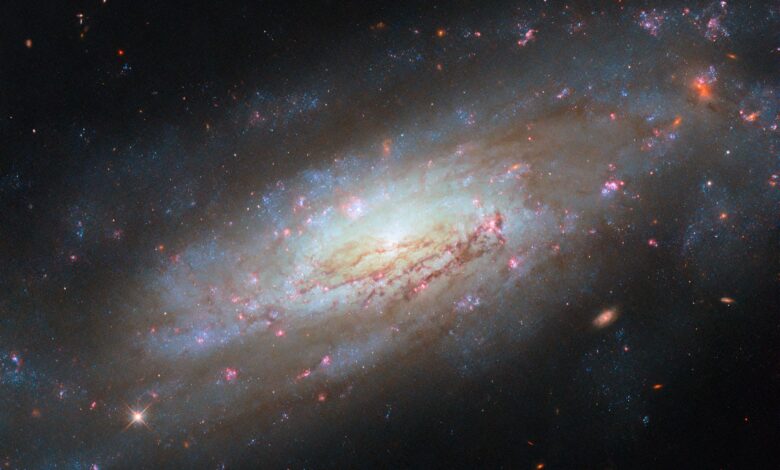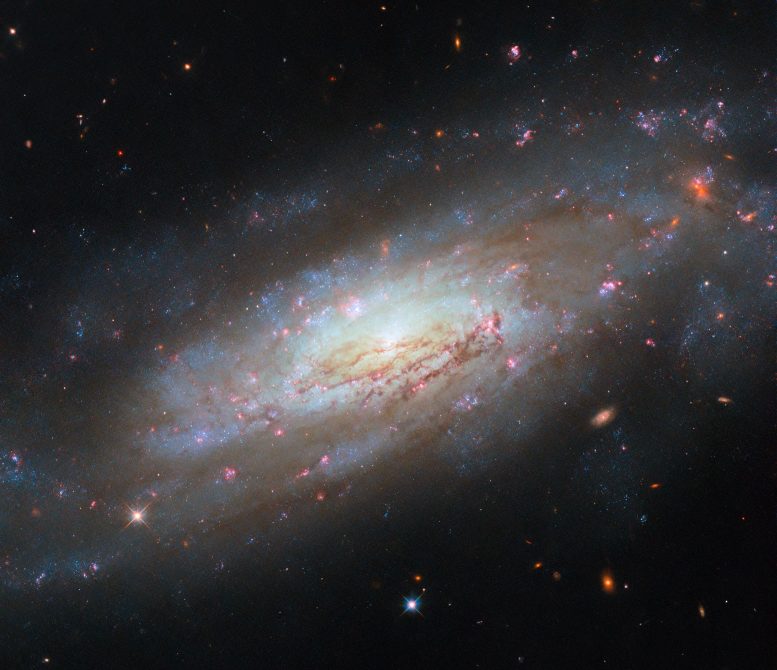Hubble Captures a Maelstrom of Matter and Energy 49 Million Light-Years Away


This Hubble Space Telescope features NGC 4951, a spiral galaxy in the constellation Virgo, 49 million light-years from Earth. Credit: ESA/Hubble & NASA, D. Thilker, M. Zamani (ESA/Hubble)
NGC 4951, imaged by the Hubble Space Telescope, illustrates the dynamic processes of star formation and energy dynamics in Seyfert galaxies.
This remarkable image from the Hubble Space Telescope showcases NGC 4951, a spiral galaxy situated 49 million light-years away in the constellation Virgo.
Captured as part of a study on the movement of matter and energy in nearby galaxies, this image reflects the ongoing cycle of star formation. In this cycle, galactic gas coalesces into molecular clouds, which then collapse to form new stars. These new stars emit powerful radiation or stellar winds, dispersing the clouds in a process called feedback. The remaining gas is left to form new clouds elsewhere.
This cycle of moving matter and energy determines how fast a galaxy forms stars and how quickly it burns through its supplies of gas — that is, how it evolves over the course of its life. Understanding this evolution depends on the nebulae, stars, and star clusters in the galaxy: when they formed and their past behavior. Hubble has always excelled at measuring populations of stars, and the task of tracking gas and star formation in galaxies including NGC 4951 is no exception.
NGC 4951 is also classified as a Seyfert galaxy, a type of galaxy that has a very bright and energetic nucleus called an active galactic nucleus. This image demonstrates well how energetic the galaxy is, and some of the dynamic galactic activity that transports matter and energy throughout it: a shining core surrounded by swirling arms, glowing pink star-forming regions, and thick dust.



